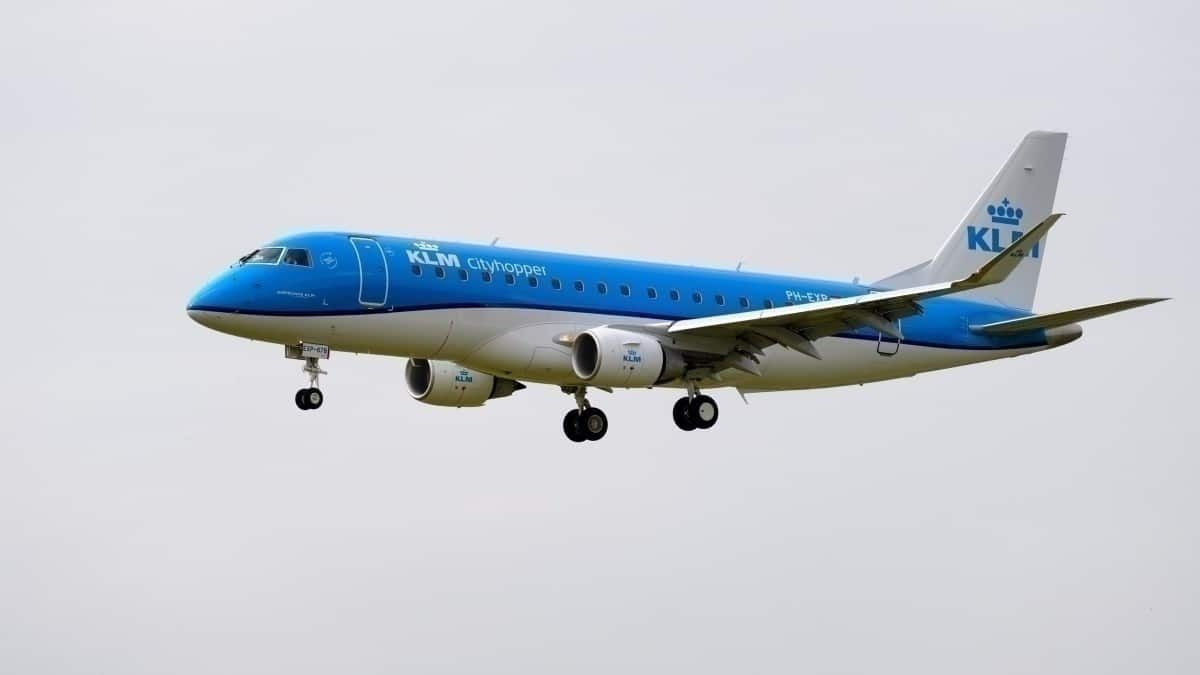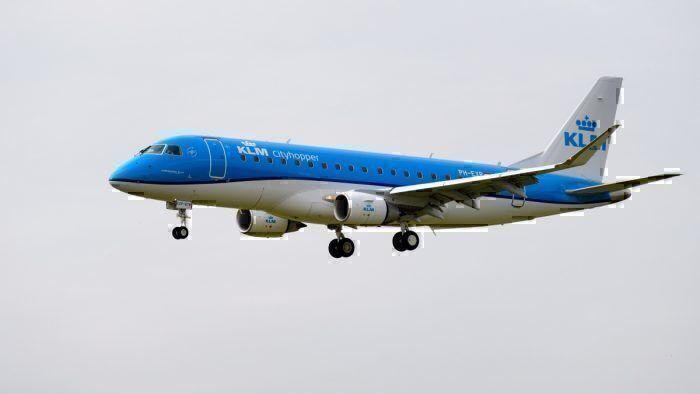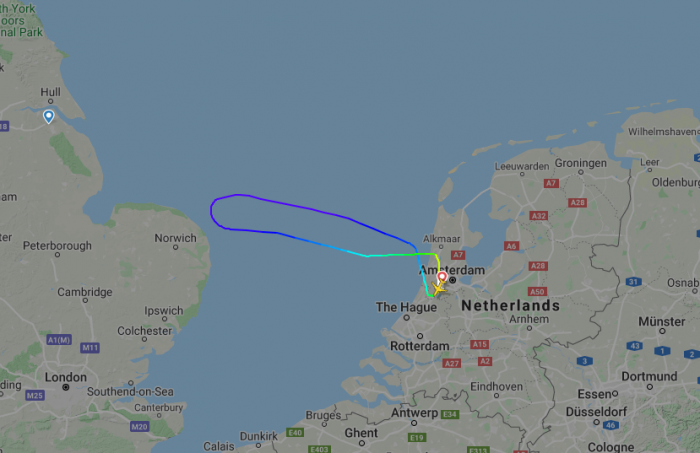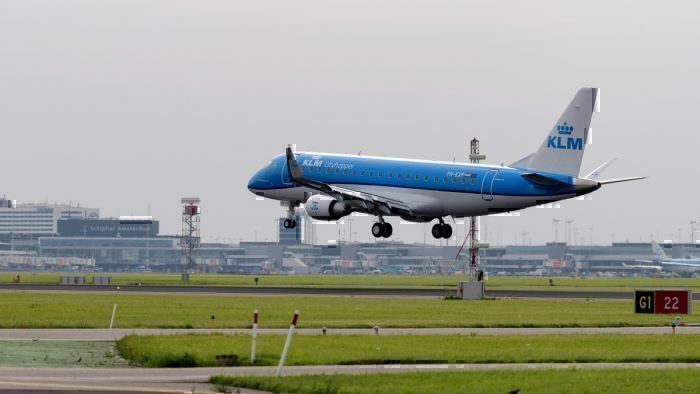A KLM Cityhopper Embraer ERJ-175 on route to Hull from Amsterdam had to return to the Netherlands after reporting vibrations in one of the aircraft's two engines. The news comes from an incident report involving a KLM Cityhopper Embraer ERJ-175. The flight took place on March 18th, from Amsterdam to Hull.
The Embraer ERJ-175, registration PH-EXT, operating as flight KL1485 was on route from Amsterdam’s Schiphol Airport (AMS) to Humberside Airport (HUY) in the United Kingdom when the incident occurred.
While cruising at an altitude of 32,000 feet over the North Sea, about 110 nautical miles northwest of Amsterdam, the flight crew noticed vibrations coming from one of the ERJ-175s General Electric CF34 turbofan engines.
The flight deck contacted Schiphol tower to advise them that they would be returning to Amsterdam and that no assistance would be required. Around 30 minutes after contacting air traffic control, the plane landed safely on Schiphol’s 18R runway.
According to aviation website The Aviation Herald, the aircraft returned to service some five hours later, following checks on the engine.
What is engine vibration?
All jet airplane engines experience vibration issues at some point in their lifespan. Airlines, however, need to constantly stay on top of the issue to avoid wear and tear of parts, damage to the aircraft, and passenger comfort.
While engine vibration is normal and commonplace, vibration issues can vary even though the fan section of the engine is most likely to blame.
Engine vibration can be caused by dirt and contaminants found in the atmosphere or a lack of lubricant that prevents the fan blades from moving freely. Monitoring engine vibration is very straight forward and can be done by performing an Engine Condition Trend Monitoring (ECTM) test. This test helps mechanics to investigate the cause of the vibration, allowing them to perform simple maintenance ahead of the aircraft's next scheduled inspection.
Engines like the General Electric CF34 found on business and regional jets, like the ERJ-175, Bombardier CRJ, and the Chinese ARJ21 are easy to balance and can be done without removing the engine from the wing.
How to prevent jet engine vibration
There are many ways operators can prevent engine vibration issues - including the following:
- Periodic fan blade inspections where mechanics rotate the fan while checking the individual blades.
- If the lubricant has deteriorated, they can be re-lubed following the engine manufacturers' instructions found in the engine maintenance manual.
- It is also a good idea to do a daily inspection of the engines to make sure there has been no damage from foreign objects.
By addressing engine vibration issues early, it will help to avoid expensive, lengthy maintenance events further down the road.
Who is KLM Cityhopper?
KLM Cityhopper is the regional subsidiary of KLM Royal Dutch Airlines and a member of the SkyTeam alliance. Based at Amsterdam Airport Schiphol, the airline operates a fleet of 17 Embraer ERJ-175s and 32 Embraer ERJ-190 aircraft according to Planespotters.net.
The airline acts as a feeder airline for KLM, the Dutch national flag carrier, ferrying passengers to Schiphol Airport from where they can take advantage of KLM’s massive worldwide network.




